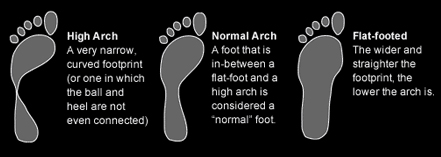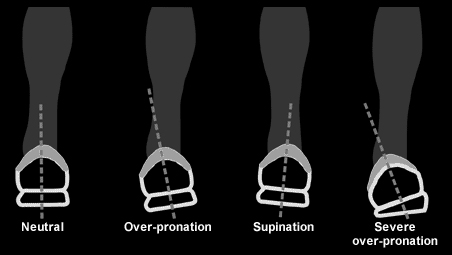How To Find The Best Running Shoe For You
While training for a marathon or a triathlon can be a daunting task in its own right–particularly for those new to the sport–so, too, can be finding the best running shoe for you. This short post will explain why no one shoe is “the best” and what to look for when choosing the best shoe for you.
 Almost any shoe can feel great when you try it on, but the real test will come when you put in some miles on the trail or pavement. You may be surprised to find out that the perfect running shoe has less to do with the name brand, and more to do with the shape of your foot and your biomechanics. And since everybody’s feet and biomechanics are different, what may be the best shoe for your peer may not be the best shoe for you.
Almost any shoe can feel great when you try it on, but the real test will come when you put in some miles on the trail or pavement. You may be surprised to find out that the perfect running shoe has less to do with the name brand, and more to do with the shape of your foot and your biomechanics. And since everybody’s feet and biomechanics are different, what may be the best shoe for your peer may not be the best shoe for you.
Our running gait and biomechanics dictate how our foot lands on the ground as we run. While this can change over time due to age and training, it typically does not change during the life of a single running shoe.
An easy thing to do is to get property fitted for a running shoe for your gait and biomechanics is to find a running store that has a treadmill and sales people who have knowledge about gait analysis. If you bring in a pair of your old running shoes, that can also help them determine how your gait and biomechanics are based simply on the wear pattern on your old shoes. But if you do not have access to a good running shoe store, a store you trust, or just want to be more knowledgable, here are some key things to know.
Start by Knowing Your Foot Type
There are two primary things to know about your foot type: foot size and arch type.
- Foot Size. If you do not know your foot size, be sure to have your feet measured on a Brannock device (the metal measurement device with the length and width sliders. When you find your size, that generally is just a starting point. Keep in mind that shoe sizes can vary from company to company, and even from model to model within the same company.
- Arch Type. There are three general types of foot arch types: 1) high arch, 2) normal arch, and 3) flat arch. The illustration below provides a great example of each type.

Learn Your Biomechanics
If you go to a podiatrist, physical therapist or a running store with knowledgable staff, they should be able to be able to tell you with fairly high certainty what your biomechanics for running and/or walking. But a simpler answer is likely right in your closet: your shoes. Take a look at the soles and observe the wear pattern. The wear pattern will indicate if you supinate, pronate, or have a neutral stride.
Here is an illustration (showing the right foot):

If you have a neutral foot strike, the wear will be centralized through the ball of the foot and a small portion of the heel. Pronation is the foot’s natural inward roll following a heel strike. Basic (neutral) pronation helps absorb impact, relieving pressure on knees and joints. It is a normal trait of neutral, biomechanically efficient runners.
If you pronate, the wear will be predominantly on the inside edge of the shoe. Pronation is from the foot’s natural inward roll. Over-pronation is a common trait that affects the majority of runners, leaving them at risk of knee pain and injury. If your biomechanics suggestion you are an over-pronator, you likely will need stability or motion control shoes.
If you supinate, the wear will appear mostly on the outer edge of the shoe. Supination is an outward rolling of the foot resulting in insufficient impact reduction at landing. Supination is not very common among runners, but those who do will likely need shoes with plenty of cushioning and flexibility.
A Few Points of Caution When Looking For The Best Running Shoe For You:
- Don’t fall prey to “peer pressure” and go out and get the latest minimalist shoe that is all the rave today. Unless your running gait is efficient enough and you have experience with “low support” running shoes, you should ease into any changes over time otherwise you increase your exposure to injury risk.
- Don’t use the same make and model of running shoe solely because you’ve been “using it for years.” Technology changes somewhat dramatically every 5-7 years so you should get reassessed on a regular basis (i.e. every 2-3 years) on which shoe is best for you.
- Furthermore, because with age your feet change, you may need a different type of running shoe today than you used 2 years ago.
No matter what shoe ends up being the right show for you, ensure you change them regularly (the length of time will vary depending on what kind of shoe you have) as the midsole of the shoe typically breaks down faster than the wear pattern on the bottom of the shoe would otherwise indicate.
